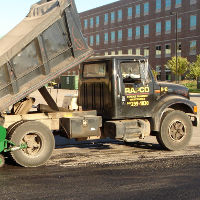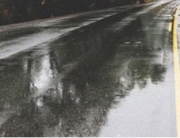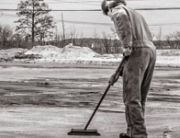 Asphalt is designed to take a beating. It is made from aggregates like stone, sand, and gravel with asphalt cement as a binding agent. It is entirely recyclable and often proves to be more effective the more it is recycled. The next time you are stuck in traffic due to repaving or irritated because the parking lot is temporarily gravel due to the asphalt being torn out for repaving, remember that this process is only temporary. You’re in the process of getting an entirely new road or parking lot that will likely be stronger than the last.
Asphalt is designed to take a beating. It is made from aggregates like stone, sand, and gravel with asphalt cement as a binding agent. It is entirely recyclable and often proves to be more effective the more it is recycled. The next time you are stuck in traffic due to repaving or irritated because the parking lot is temporarily gravel due to the asphalt being torn out for repaving, remember that this process is only temporary. You’re in the process of getting an entirely new road or parking lot that will likely be stronger than the last.
Parking lots are made of some pretty seriously tough stuff. But they aren’t completely indestructible. The elements are very demanding on all types of pavement, so maintenance is required. The best form of maintenance is sealcoating, which is the process of applying a protective barrier that battles the elements to protect the binding agents. I’ll explain:
I mentioned in the first paragraph that asphalt is made up of several items like stone, sand, and gravel. These materials alone would make a great dirt road, but no one wants to continually deal with a dirt or gravel highway or parking lots. Imagine the dust!
The binding agent used to hold those materials together is a form of cement called asphalt cement. Asphalt cement is refined residue from the distillation process of crude oils. It is naturally somewhat water resistant, but not entirely. The waterproofing material, known as a sealcoat, binds to the binding agent and provides a waterproof barrier. Sealcoating is extremely important for paved areas, because it protects against the elements.
How the Elements Affect Asphalt
Water and temperature have detrimental effects on asphalt. Water leads to the breakdown of the base materials from which asphalt are made. Water which is trapped beneath the surface of asphalt creates crocodile cracks and eventually leads to potholes.
Trapped water that freezes in the asphalt bed or asphalt cracks expands and widens cracks. Here in Franklin Park, IL and the greater Chicago area, we see a lot of freezing and thawing problems with roadways and parking lots alike.
The thaw process reduces the pressure on cracks formed during the freeze process. These cracks can’t handle as much pressure once they’ve gone through the freeze-thaw process, so vehicles cause serious damage quite quickly. Busy roadways and parking lots may go from lightly cracked to seriously damaged in a matter of weeks.
Combat the Freeze Thaw Effect
Crack filling and sealcoating are the most effective preventative measures you can take with your paved roads and driveways. Discuss your options with your paving company, and request sealcoating as often as needed to ensure that your parking lot or road is fully protected.
Please keep in mind sealcoating is not a clean or quick process. It does take time, it smells, and it is very dirty. But it is absolutely necessary for the life of your pavement. You can extend the life of your paved parking lot by several years with proper maintenance.










